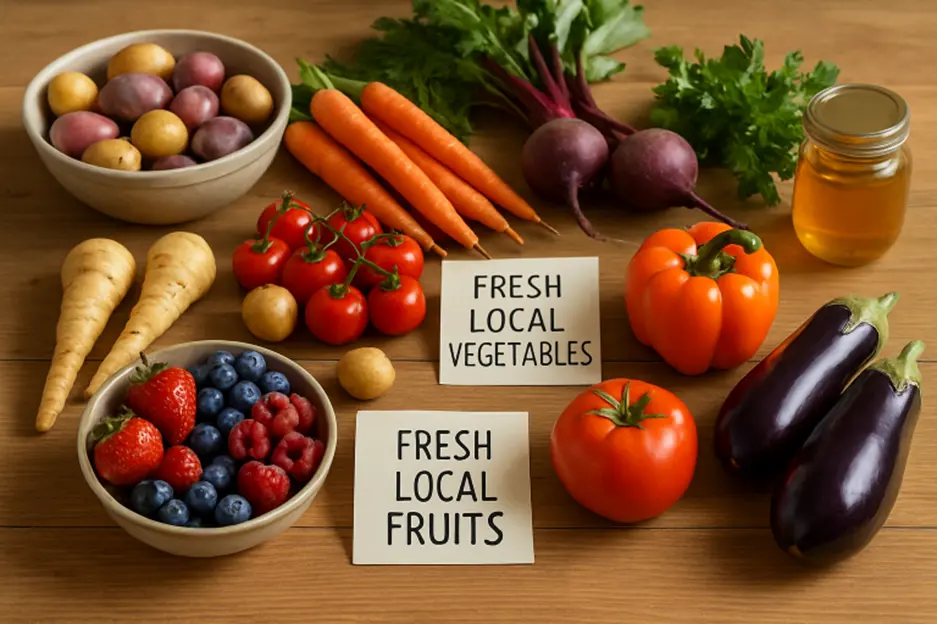Produce Power: Simple and Creative Hacks for Making Local Fruits, Veggies, and Seafood the Stars of Your Daily Meals
Introduction
Fresh, local ingredients are the foundation of unforgettable home-cooked meals. By making the most of what’s grown close to home, you not only elevate the taste of your dishes but also support local farmers and contribute to a more sustainable food system. Exploring local markets or partnering with a reliable provider like Exeter dispensary is a convenient way to access the freshest fruits, vegetables, herbs, and more.
Cooking with local produce means capturing the peak flavors of each season, from juicy summer tomatoes to crisp autumn root vegetables. Beyond taste, sourcing ingredients locally minimizes transportation, which significantly lowers your food’s carbon footprint. Making this commitment to local groceries can spark creativity in the kitchen while improving your family’s wellness.
Seasonal Fruits: A Sweet Addition
Embracing the cycle of seasonal fruits is one of the most enjoyable and fulfilling parts of eating locally and supporting seasonal agriculture. Stone fruits such as plums and peaches lend their natural, juicy sweetness to a variety of dishes, spanning both desserts and savory salads. Sliced peaches pair beautifully with rich burrata cheese and peppery arugula, while ripe plums can be gently grilled and drizzled with honey for a standout, mouthwatering summer treat.
Berries, another beloved seasonal delight, add vibrant color, fresh flavor, and a boost of vitamins to every meal. Stir them into breakfast oats or creamy yogurt, sprinkle them over fluffy pancakes, or create quick, healthy snacks by combining them with crunchy, local nuts. In addition to their delicious taste, berries are packed with antioxidants that help boost immune health and overall well-being, making them an essential part of a healthful seasonal diet.
Fresh Herbs: Elevating Flavors
No dish is ever complete without the brightness of fresh herbs. Basil and mint are classic summer herbs that instantly transform pastas, salads, and beverages. For even greater convenience and savings, consider planting your mini herb garden. Whether growing a pot of rosemary on your windowsill or mint in your backyard, you’ll always have a fresh supply ready to harvest.
Sustainable Cooking Practices
Cooking with local produce also invites more sustainable kitchen habits. Make the most of your ingredients by using the whole plant whenever possible; think carrot tops for pesto or beet greens sautéed as a side. Reducing food waste can be simple and impactful.
Composting food scraps is another excellent way to close the loop and return nutrients to your garden soil. Engaging in these practices not only benefits the environment but also connects you more deeply to your food sources and the cycles of nature. To learn more about community initiatives making a difference, explore this resource on food waste reduction.
Heirloom Tomatoes: Beyond the Salad
Heirloom tomatoes offer an extraordinary range of flavors, shapes, and colors. Their rich taste shines brightest in homemade sauces and fresh salsas. Roasting tomatoes with olive oil, garlic, and thyme creates a flavorful spread for bread or pasta, while dicing them for a rustic pico de gallo brings natural sweetness and acidity to grilled meats and veggies.
The unique characteristics of heirlooms also make them ideal for simple preparations; think tomato slices layered on toast, topped with a drizzle of olive oil and a sprinkle of flaky sea salt. Their beauty and depth of flavor celebrate the best of summer’s bountiful inspiration on seasonal produce use; see how chefs are incorporating local staples at farmers’ markets.
Root Vegetables: Roasting and Beyond
Root vegetables such as turnips, carrots, and beets truly shine during cooler months. Roasting brings out their natural sweetness and enhances their earthy flavors. Toss diced root vegetables with olive oil and your favorite herbs, then roast until tender for an easy side dish. For something different, try mashing turnips with potatoes or grating raw beets into salads for extra color and crunch.
These hearty ingredients are nutritional powerhouses, rich in fiber, vitamins, and minerals. Including root vegetables regularly in your diet supports digestion and sustained energy, perfect for busy families or anyone looking to eat more healthfully.
Dried Fruits and Nuts: Snacking and Cooking
The transition from fresh produce to dried goods is seamless with local fruits and nuts. Dried cherries, blueberries, and apples are great additions to granolas, muffins, or trail mixes. Likewise, incorporating local almonds, walnuts, or pecans provides healthy fats and a satisfying crunch to both sweet and savory recipes.
These staples store well and can be enjoyed year-round, adding a local flair to everything from breakfasts to baked desserts. A sprinkle of chopped nuts over roasted vegetables or a handful of dried fruit in your morning cereal can make everyday meals feel special.
Honey: A Natural Sweetener
Local honey is an exceptional way to add sweetness with depth and complexity. Use it as a natural sugar substitute in teas, salad dressings, and marinades. Beyond taste, local honey is often said to help soothe allergies thanks to trace amounts of pollen from local flowers. Each batch of honey features subtle flavor notes that reflect the region’s unique character, making it a true expression of place.
Final Thoughts
Committing to cook with local produce brings a world of new flavors, vibrant nutrition, and rewarding connections with your community. By shopping from local farms, growing your herbs, and experimenting with seasonal foods, you infuse every meal with freshness and purpose. Whether you’re roasting root vegetables or sweetening a cup of tea with local honey, the possibilities for creative local cooking are endless.
Also read-50 Kg: Complete Guide With Real-Life Examples & Surprising Facts!

